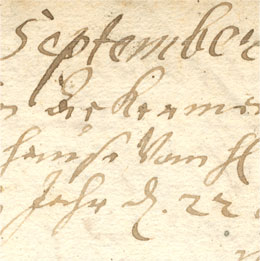Who donated the group of sculptures depicting the crucified Christ, the Virgin Mary, and John the Evangelist to Kullamaa Church, and when was it donated?
Heinrich Göseken, the long-time pastor of Kullamaa congregation, commissioned the group of sculptures on the theme of Calvary and donated it to the church. The text affirming Göseken’s donation is painted on the side of the cross facing the altar. The cross bore the crucified Christ. Göseken died in the late autumn of 1681 and his funeral was held on 31 August 1682. The Calvary was apparently mounted on the crossbeam of the church’s chancel arch at the same time. Archival sources affirm that Christian Ackermann was at work in the church together with the painter Lorentz Buchau at precisely that time.
What can the Calvary at Kullamaa Church be compared to?
The Calvary completed in 1694 at Tallinn’s Cathedral offers the best possibility for comparison with the Calvary at Kullamaa Church. The two groups of sculptures share several features in common – especially regarding the Virgin Mary and John the Evangelist, but also regarding the figure of Christ.
While Christ’s head and the folds of his loincloth in Kullamaa Church differ from those of the Christ in the Calvary at Tallinn’s Cathedral, the treatment of the contours, armpits, and knees of the statue’s body, and even of the diamond-cut style of the heads of the wooden nails hammered into the hands and feet of the statue, is identical.
The figure of the Virgin Mary in Kullamaa Church also resembles the figure of the mother of Christ in the Calvary at Tallinn’s Cathedral, both in terms of her overall attitude as well as the statue’s details.
What could the Calvary at Kullamaa Church say about Ackermann as a sculptor, who was still quite young in 1682?
If the Calvary at Kullamaa Church is the work of Ackermann – and it is difficult to prove the contrary – then he was already a trained sculptor with very good grounding in his craft when he arrived in Tallinn. The faithfulness with which his art depicts nature aroused attention and brought him prestigious, major commissions outside of Tallinn as well.
